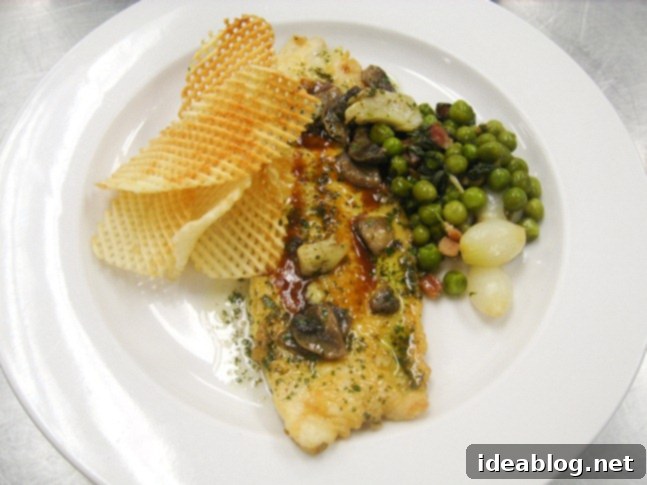Culinary School Chronicles: French Techniques, Exams, and an Exciting Externship Journey
The life of a culinary student often oscillates between exhilarating highs and demanding challenges, a reality acutely felt during this intensely busy period. After an exhaustive Saturday spent on a challenging “stage” – a supervised internship in a professional kitchen – the remainder of the weekend was dedicated to much-needed recovery and meticulous preparation for an even more rigorous week ahead. This upcoming schedule is packed with significant milestones, including my fourth critical theory and practical exam, a commitment to volunteer at the prestigious Cochon 555 event on Sunday, and another crucial stage scheduled for Monday. Merely contemplating the sheer volume of tasks and learning opportunities ahead leaves me feeling a profound sense of exhaustion, yet also a powerful undercurrent of anticipation and excitement for the journey.
Given the whirlwind of activities, I’ve decided to defer the detailed recount of my initial stage experience until next week. However, I can share a glimpse into that pivotal day. In all candor, the first several hours were fraught with nerves. I found myself navigating a level of responsibility far exceeding my initial expectations, pushing me well beyond my comfort zone. Despite the initial trepidation, the experience proved to be incredibly rewarding. The most encouraging outcome? By the end of the evening, I was offered an externship at that very establishment! This unexpected turn of events has injected a new surge of motivation into my culinary pursuits, validating the hard work and dedication required in this demanding field. This externship opportunity represents a significant step towards my professional goals, promising invaluable real-world experience in a top-tier kitchen environment.
Today’s Culinary Creations: Mastering French Classics
Today’s culinary curriculum was nothing short of a delightful and insightful journey into classic French techniques, serving up a menu that was both challenging and incredibly rewarding. Each dish provided a crucial learning opportunity, solidifying foundational skills essential for any aspiring chef. The emphasis today was on precision, flavor balance, and elegant presentation, core tenets of traditional French cooking that we strive to embody in every preparation.
The Perfect French Omelet: A Foundation Skill
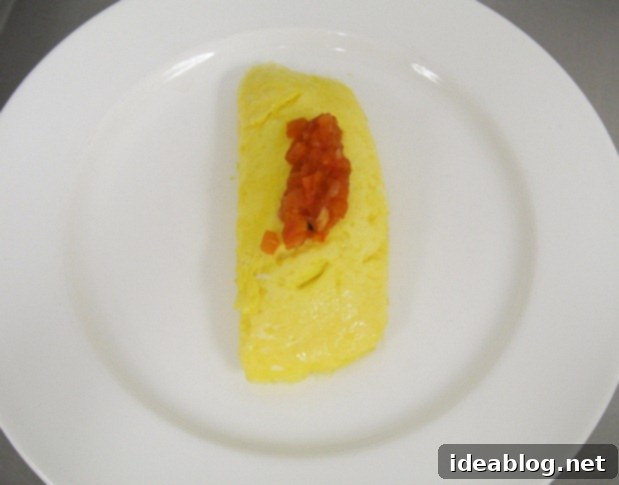
Our first course was a quintessential French omelet, delicately filled with a vibrant tomato concasse – a simple yet elegant preparation of cooked, finely chopped tomatoes and onions. The question naturally arises: why are we revisiting omelets with such intensity? The answer, strongly hinted at by our instructors, is that this deceptively simple dish will be a cornerstone of our practical exam this week. Mastering the French omelet is considered a rite of passage in culinary training, as it requires precision, speed, and a delicate touch that reveals a chef’s fundamental skill. The ultimate goal is to achieve an omelet that exhibits absolutely no browning on the exterior, maintaining a pristine, pale yellow hue, while remaining beautifully runny and custardy on the inside. This delicate balance of exterior perfection and interior tenderness is a hallmark of truly skilled cooking and a fundamental benchmark for culinary proficiency. Achieving this requires constant movement of the pan, rapid whisking of the eggs, and precise temperature control, all contributing to a light, fluffy, and impeccably presented dish that showcases mastery over basic ingredients.
Trout Filets Meunière: A Classic Main Course
For our main course, we returned to another familiar yet freshly interpreted dish: exquisitely prepared trout fillets. While we’ve tackled trout before, today’s rendition featured new, complementary sides and a subtle, refined twist. The star accompaniment was a classic meunière sauce, a truly elegant French preparation crafted from perfectly browned butter, a bright squeeze of fresh lemon juice, and a scattering of finely chopped parsley. This sauce, with its nutty depth and zesty freshness, perfectly complemented the delicate flavor of the trout, enhancing its natural taste without overpowering it. To elevate the dish further, we incorporated beautifully sautéed mushrooms and tender, sliced artichoke hearts, adding layers of earthy and slightly tangy flavors that harmonized wonderfully with the main components. This exercise wasn’t just about cooking fish; it was about understanding how to build a complete, balanced plate, using traditional sauces and thoughtful garnishes to enhance the primary ingredient, demonstrating the principles of classical French plating and flavor pairing.
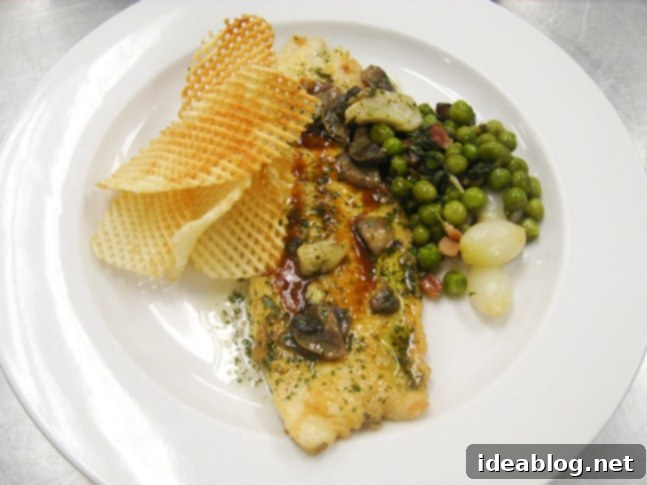
Thoughtful Side Dishes: Adding Depth and Texture
Accompanying our trout, we prepared a rather unconventional yet intriguing pea dish. These vibrant green peas were sautéed with savory bacon, sweet pearl onions, rich chicken stock, and, surprisingly, fresh lettuce. While the combination might sound unusual at first, it aimed to add a complex medley of flavors and textures to the meal, offering a fresh contrast to the richness of the main course. My personal take, however, often leans towards caution when using bacon. I frequently find that its robust, smoky flavor can easily overpower the more delicate nuances of other ingredients, dominating the entire palate. I suppose in a professional culinary environment, expressing such an opinion might label me a culinary contrarian, but it’s a genuine observation regarding flavor balance that I continue to explore and refine. This dish, while unique, was a testament to the diverse approaches to vegetable preparation in classical cuisine, encouraging us to think beyond the conventional and experiment with less common combinations to achieve depth.
We also ventured into another fascinating potato preparation: pommes gaufrette, essentially delicate waffle chips. This innovative side dish showcases an ingenious technique for transforming a humble potato into an elegant, crispy accompaniment. To achieve that distinct, intricate waffle texture, one must utilize the specialized bottom blade of a mandoline slicer, rotating the potato precisely 45 degrees between each successive slice. This meticulous rotation creates the characteristic crisscross pattern, ensuring maximum surface area for crispiness. Once expertly sliced, these delicate potato wafers are then carefully fried in oil maintained at a precise 350 degrees Fahrenheit. The result is a remarkably light, airy, and incredibly crunchy chip that adds both visual appeal and a delightful textural contrast to any meal. This technique highlights the importance of specialized tools and precise execution in French culinary arts, turning a simple vegetable into a work of edible art and providing an exciting alternative to more common potato preparations.
Dessert Extravaganza: Elegant Barquettes
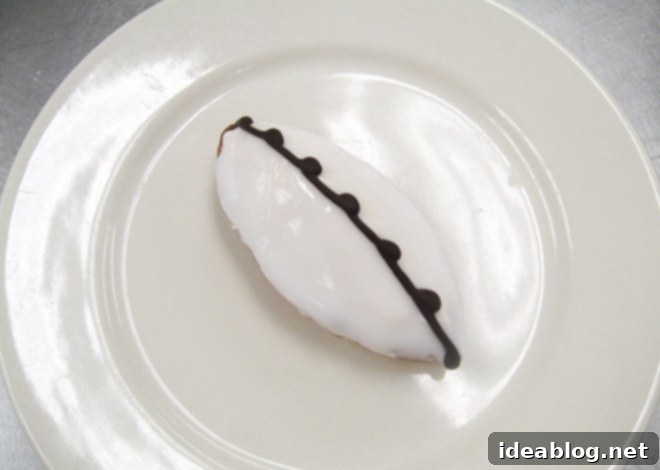
Last, but certainly not least, we crafted exquisite barquettes, which translate to “boat-shaped” pastries. This dessert is a truly classic French patisserie item, renowned for its delicate structure and rich flavors, representing a pinnacle of traditional dessert making. Each barquette begins with a perfectly golden pate sucree tart shell – a sweet, crumbly shortcrust pastry that forms the foundational “boat.” This shell is then generously filled with a luscious frangipane, an aromatic almond cream filling, and baked until golden and fragrant, its nutty aroma filling the kitchen. Once cooled, the barquettes are meticulously topped with a cloud of luxurious Italian meringue buttercream, which we flavored with a subtle infusion of chestnut puree and a hint of rum, adding layers of warmth and sophisticated sweetness. The process of making Italian meringue buttercream itself is a delicate art, involving pouring hot sugar syrup into whipped egg whites, creating a stable, silky, and incredibly smooth frosting that is both rich and light.
After the buttercream is piped, the barquettes are carefully refrigerated to allow the filling and topping to set firmly, ensuring structural integrity for the next crucial step. The final, and arguably trickiest, step involves dipping these individual pastries into a tempered fondant – specifically, the icing sugar variety, distinct from the rolled cake fondant. The art of tempering this fondant correctly is paramount; if not executed with precision, it will fail to set properly and will not achieve that characteristic glossy, pristine finish, which is essential for the barquette’s elegant appearance. This dessert, while challenging to fully convey its intricate beauty without more visual aids, proved to be incredibly sweet, yet surprisingly much more delicious and nuanced than I had initially anticipated. It’s a testament to the layered flavors and textural contrasts that define classical French pastry, transforming simple ingredients into a sophisticated culinary experience that is both visually stunning and exquisitely flavorful.
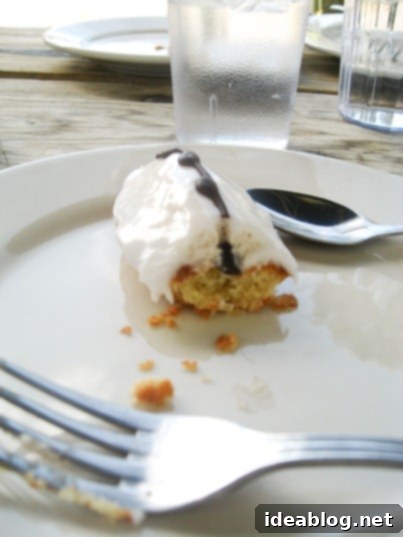
Anticipating Tomorrow: Hand-Crafted Seafood Sausages
The afternoon session was dedicated to crucial preparation for the following day’s menu, a practical task that involved the intricate process of making seafood sausages entirely by hand. This undertaking highlights a fundamental aspect of professional cooking: understanding and utilizing ingredients to their fullest potential, and mastering techniques that lead to exceptional products. The sausage mixture itself was a rich and complex blend, comprising a medley of perfectly cooked seafood – a luxurious combination of tender crayfish meat, succulent crabmeat, delicate scallops, plump shrimp, and flaky salmon. This exquisite blend was then meticulously combined with a silky seafood mousse, prepared from fresh cream, more scallops, and salmon, which acts as a binding agent and imparts an incredibly smooth, refined texture to the finished sausage. This commitment to creating every component from scratch, even something as specialized as a sausage, exemplifies the dedication to quality and craftsmanship instilled in a top-tier culinary program, preparing us for the demands of fine dining.
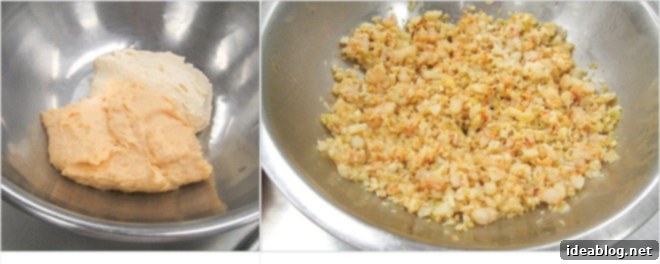
Let me tell you, witnessing and participating in the process of hand-making seafood sausages is a truly interesting experience, and one that quickly dissolved into collective hilarity by the end of it. The sight of us grappling with the sausage casings and attempting to achieve uniform shapes was undoubtedly a source of great amusement, as our initial attempts often resulted in rather comical, uneven creations. Clearly, despite our serious culinary ambitions, we are all capable of a good laugh, and moments like these truly highlight the camaraderie and shared journey in culinary school. It was messy, it was challenging, but it was also incredibly fun and a fantastic bonding experience for the class, transforming a potentially intimidating task into a memorable lesson in teamwork and patience.
Here, our esteemed Chef Patrice provides a masterful demonstration of the technique, making it look effortlessly elegant, as all great chefs do! His calm demeanor and precise movements serve as a perfect example of the skill we aspire to achieve in our own culinary careers.
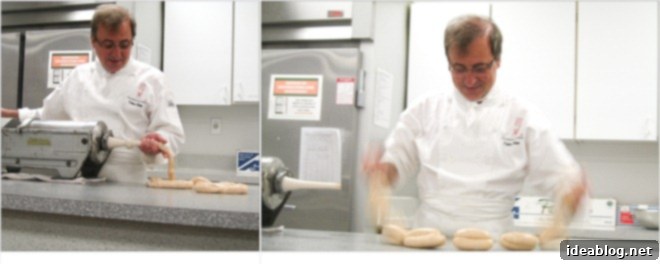
Following Chef Patrice’s expert guidance, it was our turn to put theory into practice. While the process itself might be described as somewhat un-photogenic and, at times, a little gross due to the tactile nature of working with the sausage mixture, it was an invaluable learning experience well worth capturing. We initially found it a bit tricky to master the stuffing and shaping, but with perseverance and teamwork, we quickly got the hang of it, producing an impressive batch of perfectly formed seafood sausages. This hands-on task reinforced the importance of developing a keen sense of touch and patience in the kitchen, turning a potentially daunting task into a manageable and even enjoyable one, and deepening our understanding of charcuterie principles applied to seafood.
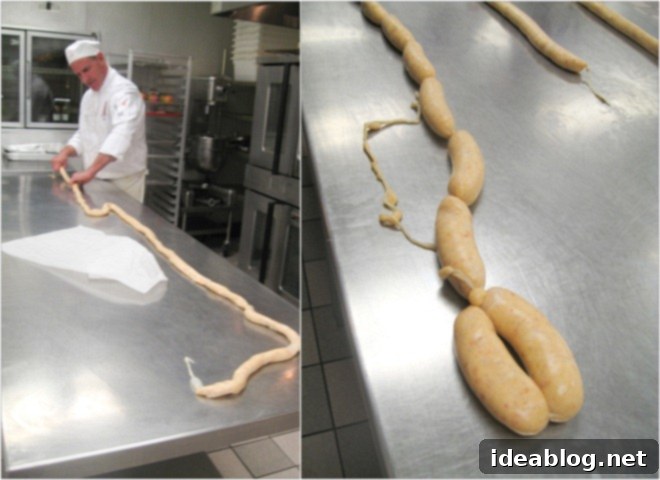
After successfully making and shaping our delicate seafood sausages, the next crucial step was to gently poach them in very hot, but not boiling, water. This gentle cooking method ensures they retain their succulent texture and delicate flavor without breaking, preparing them for their final presentation. Tomorrow, these beautiful sausages will be seared to perfection, developing a delicious golden crust and intensifying their flavors, and served alongside freshly made homemade pasta – a promise of another exceptional dish to come, showcasing the versatility and creativity inherent in French-inspired cooking and the culmination of our day’s meticulous preparation.
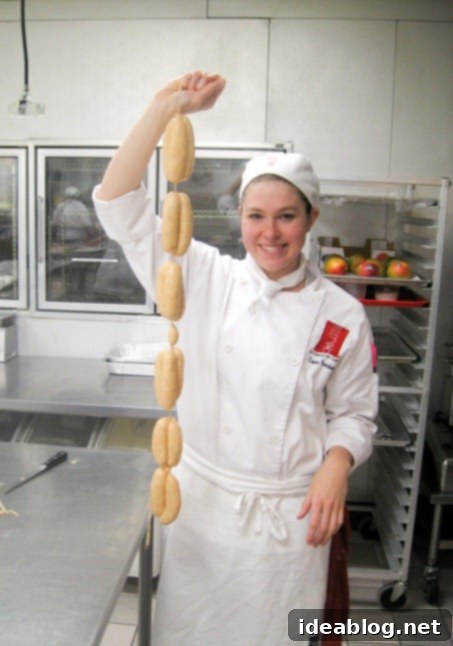
Reflecting and Preparing for What’s Next
That pretty much encapsulates an incredibly full and rewarding day in the culinary school kitchen. From mastering classic French omelets and elegant pastries to hands-on sausage making, every moment was a step further in my culinary education, deepening my appreciation for the artistry and precision required in this profession. The constant cycle of learning, practicing, and refining techniques is both demanding and exhilarating. Now, with the aroma of our day’s creations still lingering and the memory of the day’s lessons fresh, I’m off to immerse myself in studying for my next theory exam. The journey to becoming a chef is relentless, demanding constant learning, practice, and dedication, but every challenge brings me closer to my aspirations and reinforces my passion for the culinary arts. Until next time, when I hope to share even more insights from this exciting path, including the details of my first stage and the experience of volunteering at Cochon 555!
